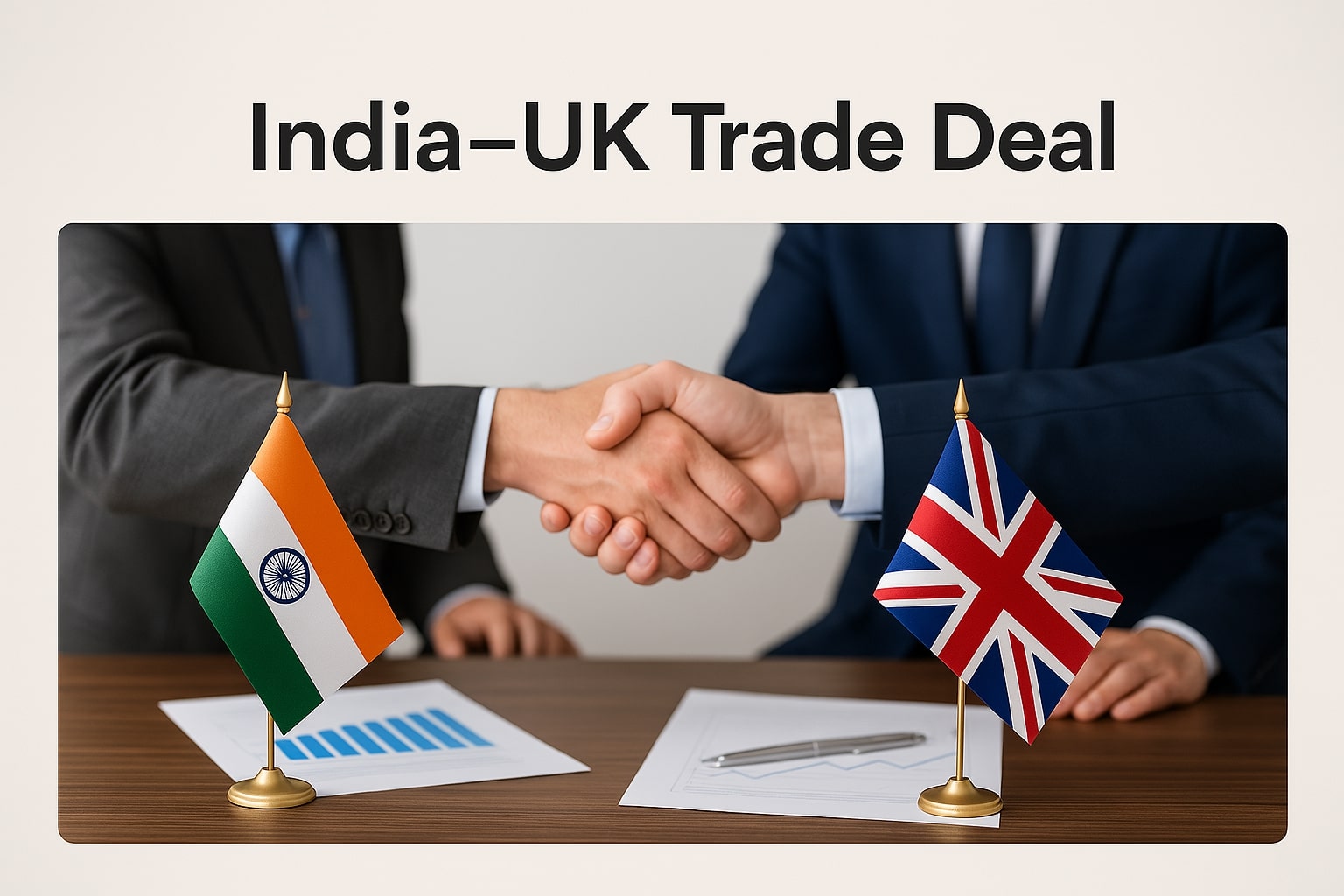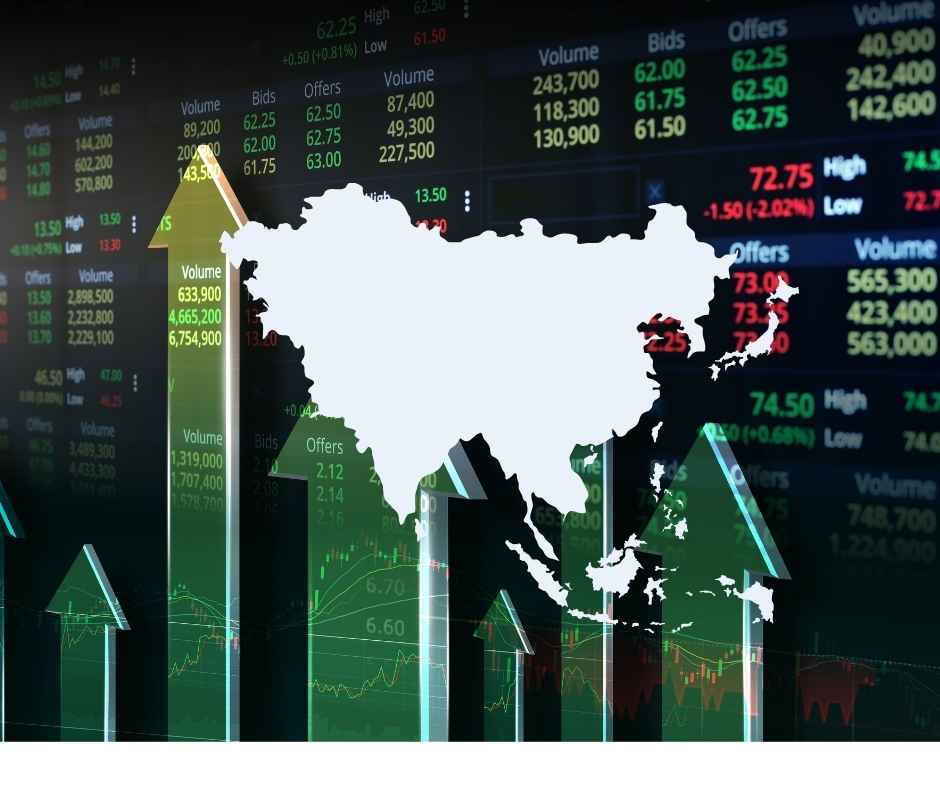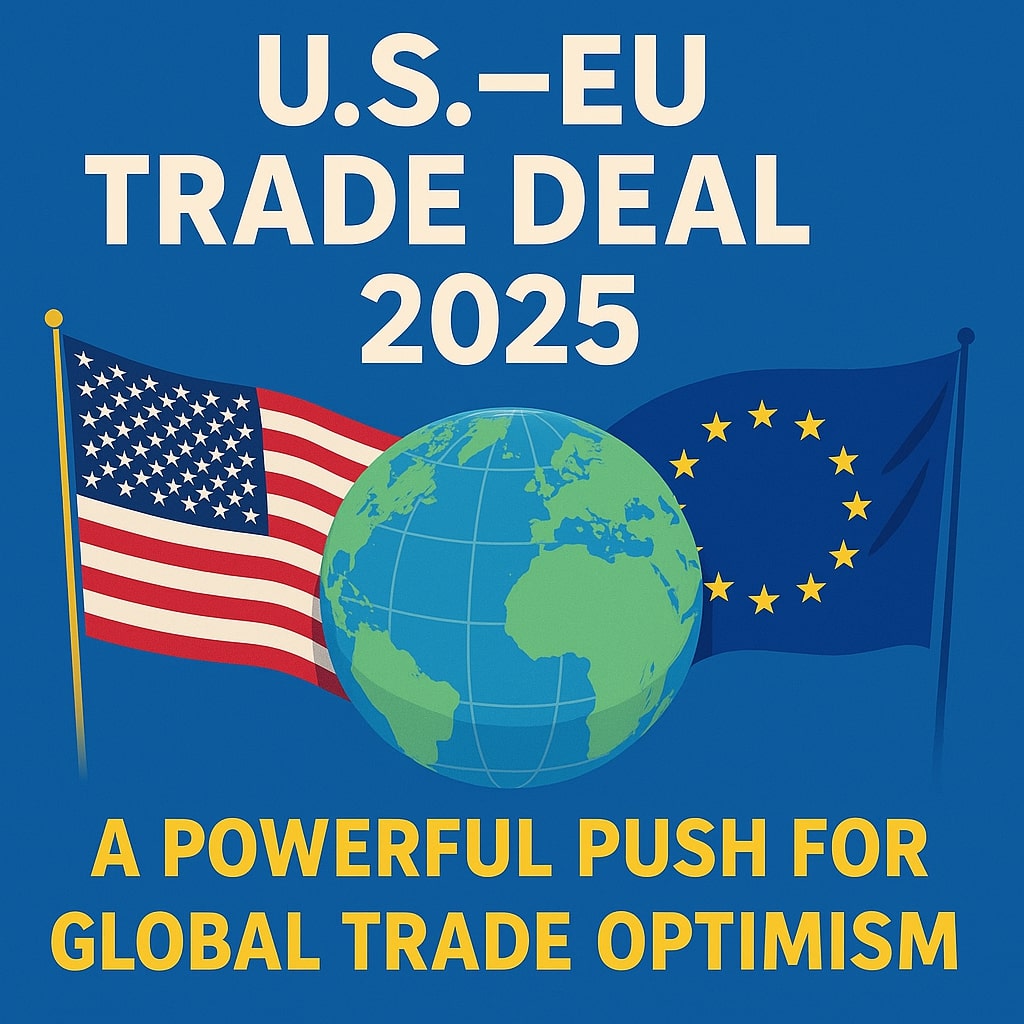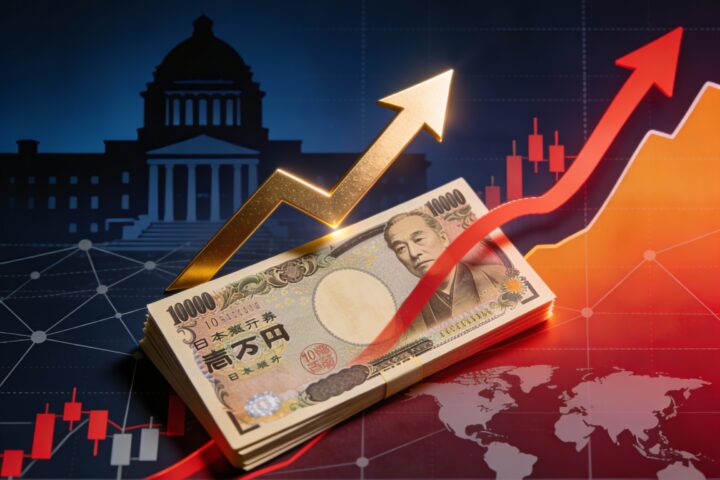The India UK FTA 2025 has been officially signed, marking a historic breakthrough in bilateral economic relations. Indian Prime Minister Narendra Modi and UK Prime Minister Keir Starmer sealed the UK India trade agreement on July 24, 2025 at Chequers, with expectations the pact will add approximately $34 billion annually to bilateral commerce and target trade worth $120 billion by 2030. The Economic Times+5India Briefing+5GOV.UK+5The Times+11Reuters+11Reuters+11GOV.UK+1AP News+1
This India UK FTA 2025 stands out as the UK’s biggest trade deal since Brexit and India’s most significant agreement with a European partner to date. Analysts call it a blueprint for high-standard trade pacts ahead. WikipediaReutersAP News
🚀 Key Gains from the India UK Trade Agreement
- Tariff Eliminations:
UK tariffs on Indian textile, leather, gems & jewellery, automotive and marine exports will drop to zero in most cases. 99% of Indian exports will enjoy duty-free access to the UK. India BriefingThe Times of India - UK exports such as whisky, gin, salmon, cosmetics, and machinery will benefit from tariff reductions—some slashed from 150% to 30% over ten years. Financial Times+2Reuters+2AP News+2
- Sector Wins:
Indian micro and small enterprises in pharma, electronics, footwear, and chemicals will gain stronger market access. For the UK, industries like aerospace, automotive parts, and fintech will benefit. India BriefingPress Information BureauGOV.UK - Investment Surge:
The agreement is expected to unlock £6 billion in new trade and investment commitments, particularly in AI, aerospace, and dairy. AP News+1Financial Times+1
🏛️ Strategic Impact & Long-Term Outlook
This India UK FTA 2025 has been endorsed as transformational by business leaders in both countries. Industry associations such as the Confederation of British Industry and UK India Business Council praised the pact as a clear signal that the UK remains open for global business. The Economic Times+2GOV.UK+2Hindustan Times+2
As the UK’s first large-scale post-Brexit FTA, and India’s most comprehensive deal with a developed nation, the agreement could serve as a model for future trade talks with the EU or Asia-Pacific counterparts. Reuters
📈 Economic Forecast: Growth, Jobs, and Integration
Projected benefits of this UK India trade agreement include:
- Doubling bilateral trade from roughly $55 billion to $120 billion by 2030. The Guardian+2Financial Times+2Wikipedia+2Press Information Bureau+1India Briefing+1
- Creation of jobs across sectors—expected boost to UK economy by £4.8 billion annually, and Indian MSMEs gaining scale in export clusters across Tiruppur, Surat, Chennai and elsewhere. Wikipedia+3India Briefing+3The Guardian+3
- Enhanced professional mobility: The FTA includes limited visas for yoga instructors, artists, and creative professionals as part of cultural exchange and trade facilitation. Financial Times+1AP News+1
⚖️ Potential Challenges and Criticisms
Though widely hailed, critics have flagged weaker protections in labor, environmental, and health policy chapters. The absence of binding standards in these areas may require adjustments during ratification in both parliaments. The Guardian
Ongoing talks will also address UK concerns about India’s proposed carbon border tax and potential climate provisions. Negotiations for a separate bilateral investment treaty are still in process. The Economic Times+15The Guardian+15Reuters+15
✒️ Expert Insights
UK Trade Policy Head at BCC said: “This pact is a strong milestone for UK exporters and may unlock new growth in automotive and consumer goods.” HSBC UK and Standard Chartered leaders echoed enthusiasm for investment certainty in financial services under the India UK FTA 2025. GOV.UK
In India, business councils called the FTA a transformational milestone and highlighted its impact across textile, gem, and pharma clusters.
The India UK FTA 2025 marks a new era in bilateral trade relations. With ambitious targets, sweeping tariff cuts, and structural alignment in key sectors, the agreement promises elevated trade, investment, and integration for both economies.
For detailed sectoral analysis and trade implications, visit DF Media and follow Welp Magazine for updates







